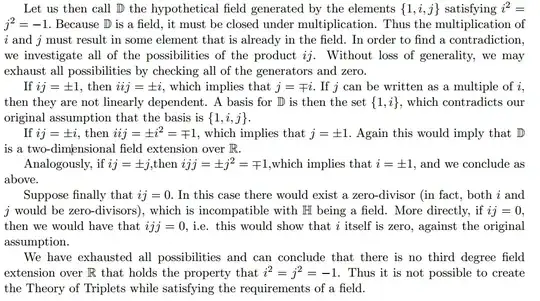I'm reading a paper about Hamilton's discovery of quaternions and it explains why he failed in his 'theory of triplets' where he tried to make a vector with $3$-dimensions, as an analogy to the complex field, where we can see a number as a $2$-dimensional vector. In this paper, he explains why it is impossible to create a field with $3$ components, that is an extension of the complex field (in other words, it respects addition, and multiplication in the same way...).
Here it is
As you can see, it goes through all the possibilities and proves that it is impossible. The paper, however, does not explain why $j^2=-1$. It could be anything! Why $-1$?** The article itself is pretty intuitive, but this aspect kills me. Later, in the article, it says that we should instead consider a 4th component called $k$, such that $k^2=-1$ (also, $i$ and $j$ too). Here is the paper.
EDIT: This paper by Rupert Shuttleworth turned out to be extremely helpful (mirrored here on archive.org)
